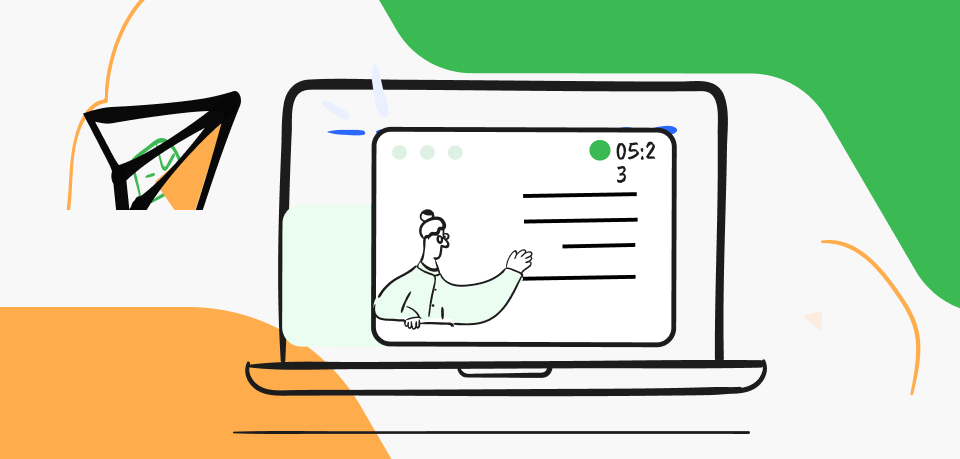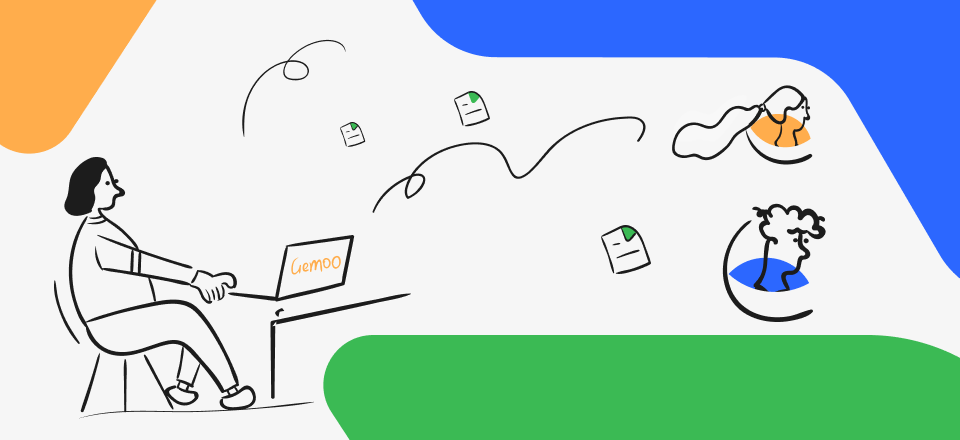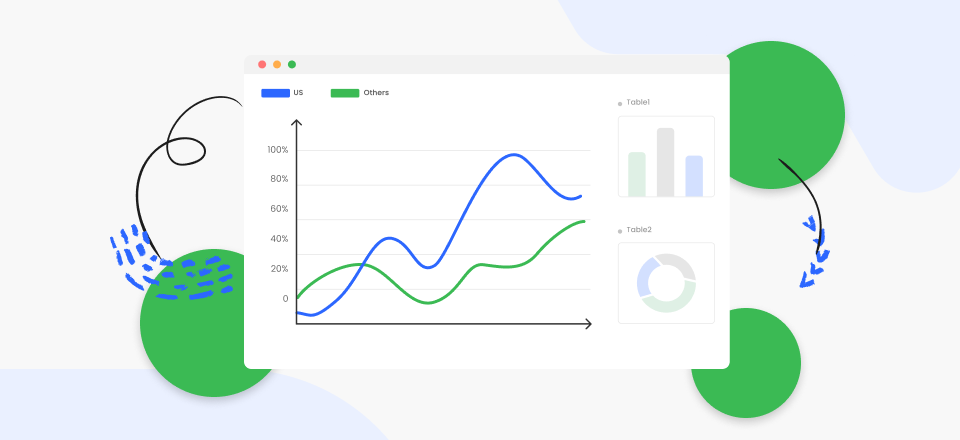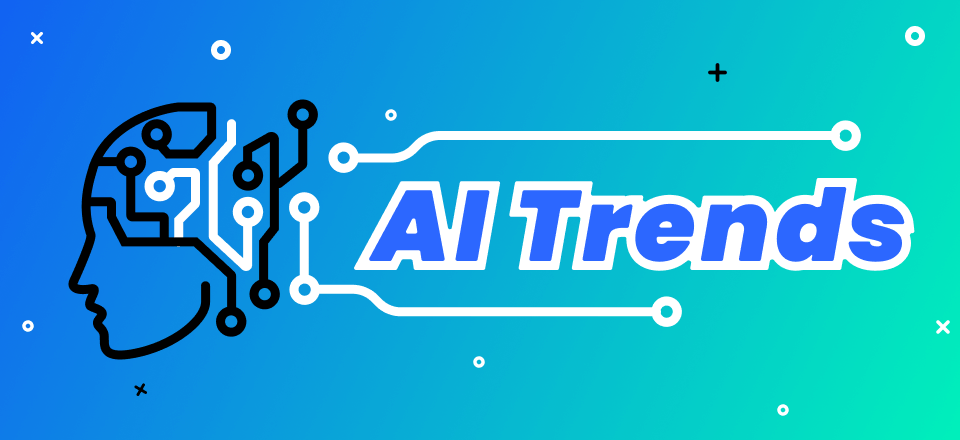
Artificial Intelligence Trends
Artificial intelligence (AI) is rapidly entering people’s daily life, and the boundaries between AI and humans are getting blurred in the near future. The adoption of AI will continue to increase as more businesses and research organizations implement new tools, methodologies, and techniques to drive innovation.
What are the AI trends for 2023? What will the latest advances in AI mean for the next few years? From Generative AI to No-code AI, these trends are shaping the future of AI and impacting our lifestyles and businesses around the globe in new ways. Our team of experts decided to research how the technology works. We came across some trends that will be shared here. Are you ready? Keep reading, then!
Table of Contents: hide
Top 10 AI Trends You Want to know [Infographic]
Having done some legwork on the top AI trends, here are the best 10 we did come across and would like to share with you.

AI Trends Infographic
1. NLP in AI
Natural Language Processing, acronym as NLP, simply means the capability of a computer to analyze and translate human language when in its natural state. NLP is a branch of artificial intelligence (AI) that enables machines to understand human language.
Companies such as Apple and Google implement this AI tech in developing voice recognition apps such as Siri and Google Voice, respectively. Besides analyzing and translating speech, Natural Language Processing scans/analyzes texts for grammatical and typographical errors. NLP is the smart AI tech integrated into Grammarly and other error-detection machines. Natural Language Processing also supports text creation. AI is also tucked into content generators, AI singing voice generators, or rewriting tools like OpenAI, GPT-3, and more.
NLP Use Cases:
- Sentiment Analysis
- Virtual Assistants
- Chatbots
- Search Engines
- Automatic Language Translation
- Predictive Text
- Customer Feedback Analysis
- Academic Research and Analysis
- Analysis and classification of medical records
- Stock Forecasts and Insights
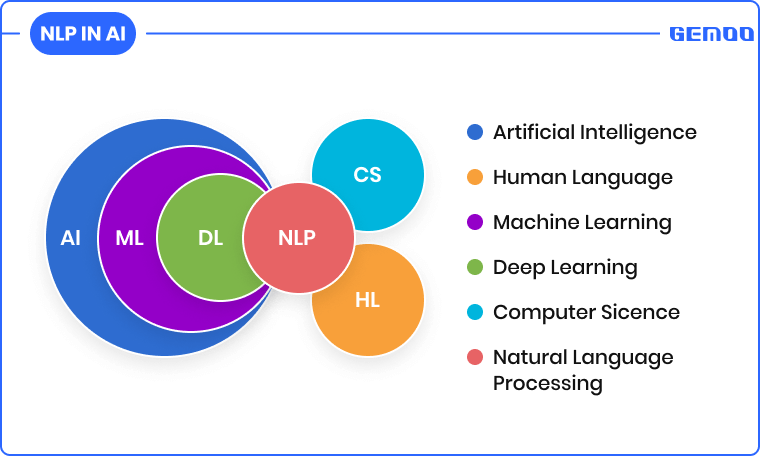
AI Trends – NLP in AI
2. Generative AI
As the name implies, Generative AI is structured to generate corresponding results according to your demand or search. This AI model is one of the most widely used trends in the AI space because of the convenience it provides. With generative AI, you can create content that flows naturally as if humans wrote it. You can also use it to generate audio, videos, and images.
This AI tech leverages machine learning algorithms to generate corresponding results. It analyzes and restructures existing data to print the required results. With this tech, you need not stress your brain anymore. Just input your data in the required field, exercise patience, and in a few seconds results will be presented.
Generative AI Use Cases:
- Text Generation
- Image Generation
- Music Generation
- Algorithm Invention
- Data Augmentation
- Data Synthesis
- Artificial Creativity
- Neural Network Design
- Creative Question Asking (CQA)
- Artificial General Intelligence (AGI)
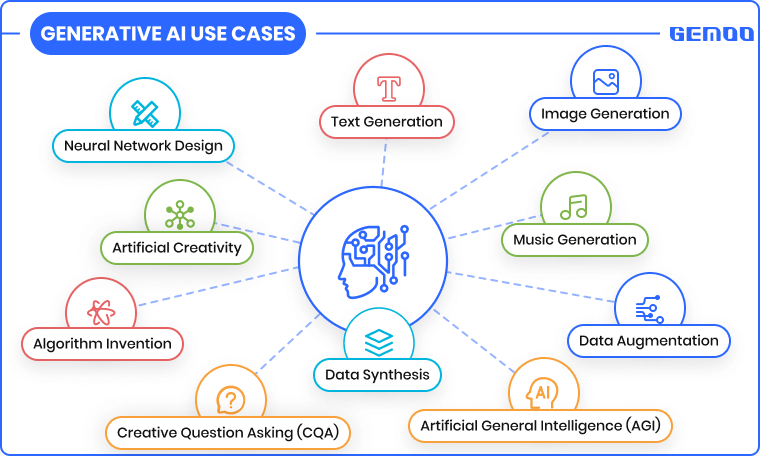
AI Trends – Generative AI
3. AI Chatbot
The Chatbot is one of the most helpful AI technologies on this list. AI chatbot is a virtual assistant implemented by AI, ML, and NLP that understands and simulates a human-like conversation with its user. With this tool, companies can quickly create automated messages and responses which humans can understand using bots.
AI chatbots play a crucial role in so many digital businesses. It helps reduce labor, alleviate stress and improve customer service. Besides customer services, AI Chatbots are often used in scheduling tasks and meetings, especially in healthcare, marketing, and educational institutes.
Data reports from Comms100 revealed that Chatbot can handle 69% of chats and schedules effectively. AI-chatbot adoption can truly make a difference in customer service.
AI Chatbot Benefits:
- Cost Savings
- Contextualized, AI-driven Support
- Better customer data analysis
- Enhanced Customer Engagement & Sales
- Better Lead Generation, Qualification & Nurturing
- Robots Save a Lot of Time
- Wide Range of Possible Applications
- Applicable to Multiple Industries
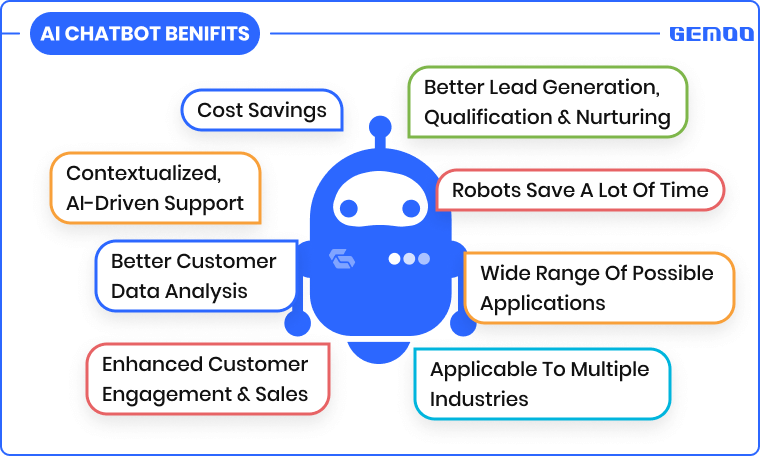
AI Trends – AI Chatbot
4. AI in Metaverse
This advanced technology, Metaverse, aims to bring everything happening in real life onto the net. With Metaverse, you can bring everything happening within your workspace into the virtual world. Whether you want to run advertisements, share information, etc., you can do that using avatars in Metaverse instead of humans. 2023 will be a decisive year for many companies to decide how to create their worlds in the Metaverse.
The latest technology in artificial intelligence is one of the key elements of Metaverse. For example, artificial intelligence allows us to overcome the limitations inherent in AR and VR and create realistic 3D images and spaces. It can be said that any latest artificial intelligence technology can find applications in the Metaverse. The latest technology in artificial intelligence is one of the key elements of Metaverse. For example, artificial intelligence allows us to overcome the limitations inherent in AR and VR and create realistic 3D images and spaces.
AI is now considered one of the biggest contributors to the growth of the Metaverse. AI will be a key enabler of:
- Metaverse AIOps
- Comprehensive User Interface
- Immersive experience
- Digital Avatars
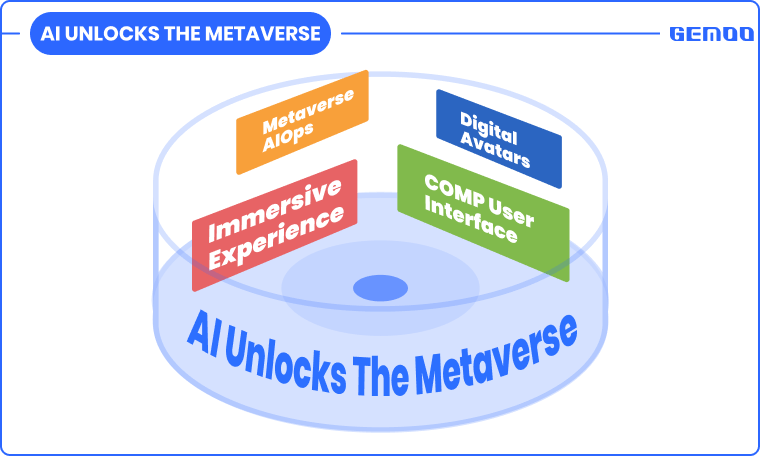
AI Trends – AI in Metaverse
5. AI in Healthcare
No doubt AI has revolutionized the healthcare industry worldwide. It has helped fix the majority of the loopholes in the industry, especially manpower. Wondering how possible that is? Well, AI has taken over some roles, such as customer service in the healthcare sector.
For instance, we have conversational AI chatbots which are programmed to respond to customers’ queries or reports. Also, there are bots that help in schedule management. These bots inform patients about a doctor’s availability and fix the nearest appointment dates.
Additionally, this advanced technology optimizes the functioning of healthcare infrastructures. A typical example is in Defibrillators where AI uses machine learning to provide accurate data about the heart rate of a patient.
AI Use Cases in Healthcare Industry:
- Analysis of medical images
- Applications for diagnosis and treatment
- Patient Care
- Remote Patient Assistance
- Drug Making & Research
- Healthcare Management
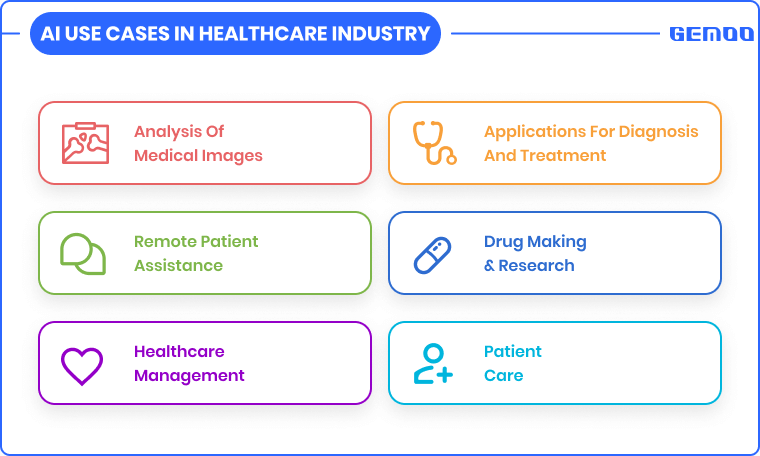
AI Trends – AI in Healthcare
6. AI & IoT
What is AIOT? The term AIoT combines IoT connectivity with artificial intelligence-driven deep learning and advanced analytics.
Gone are the days when humans had to analyze data reports gathered using the Internet of Things, IoT. AI has now taken over. The integration of AI with IoT has made data analysis fast, and accurate.
Additionally, this advancement in technology would help boost operational efficiency within an organization since data results are error-free. It would also help in better decision-making, thereby improving risk management.
AIOT Top Use Cases:
- Video surveillance
- Supply chain management
- Robust asset management
- Energy Management
- Inventory management
- Predictive Maintenance
- Real-time machine status monitoring
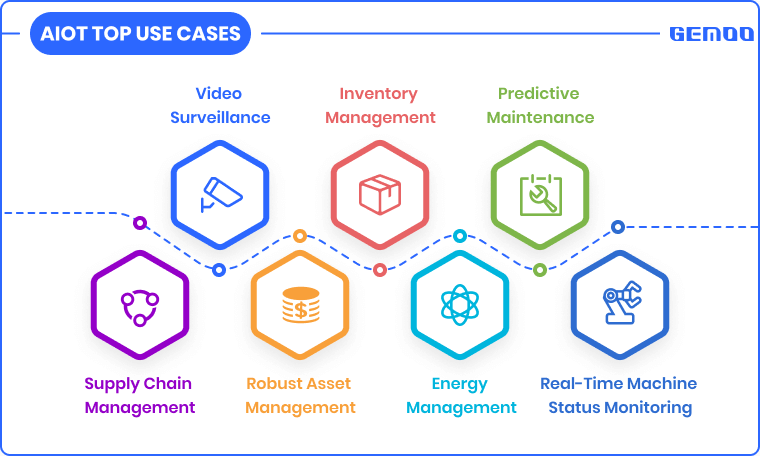
AI Trends – AI & IoT
AIOT Real-life Use Cases:
- London City Airport
- Boston Dynamics Spot
- Tesla’s self-driving car
- ET City Brain
- Amazon GO
- Walmart
7. AI in Fintech
As aforementioned, the effect of AI is felt in all industries, and Fintech isn’t left out. With this trend, financial institutions can easily collate, categorize, and analyze data from the global financial market accurately, which in turn, helps in better decision-making.
This technology makes it for financial analysts and advisers to make predictions about the global economy. AI also makes it easy to determine whether or not there will be global or national inflation or recession.
In addition to the qualities of AI in Fintech, we have fraud detection. Regulatory bodies use AI to scrutinize the financial accounts of a suspect for money laundering. And the results obtained are usually 99.9% accurate.
Fintech AI Use Cases:
- Stronger security
- Greater Fraud Detection
- Improve Customer Service
- Personalized Banking Services
- Wealth Management Consulting
- Enhanced Algorithmic Trading
- Predictive Analysis
- Robotic Process Automation (RPA)
- Save money and resources
- Credit Scoring and Loan Forecasting
- Intelligent decision
- Insurance Management
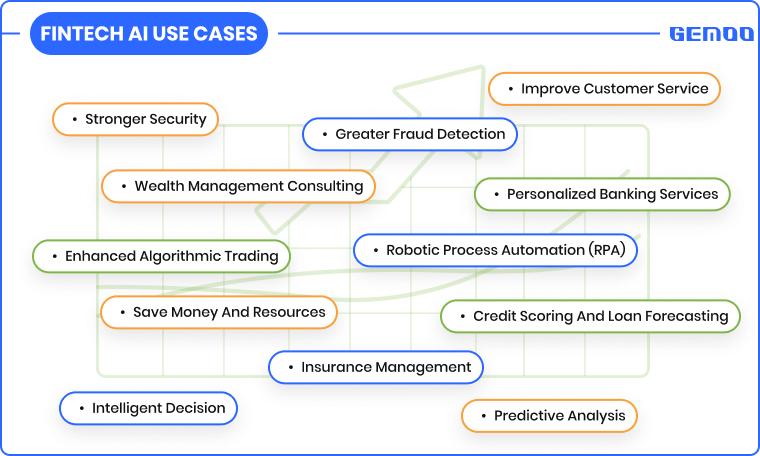
AI Trends – AI in Fintech
8. Democratization in AI
The democratization of AI means making AI accessible to all. Most software, apps, or programs have integrated AI into their systems so everyone can get familiar with the technology. And since AI is readily available to people worldwide, businesses don’t have to spend so many resources to train their workers.
In other words, open-source datasets and tools developed by companies like Microsoft and Google — which require less knowledge of AI from users — are available so that anyone can build innovative AI software. This has led to the rise of the “Democratization of AI”.
Democratization of AI Benefits:
- Lower Barriers to Entry
- Minimize Cost
- Build Highly Accurate Models
- More data-driven decisions
- Higher productivity
- Increased adaptivity
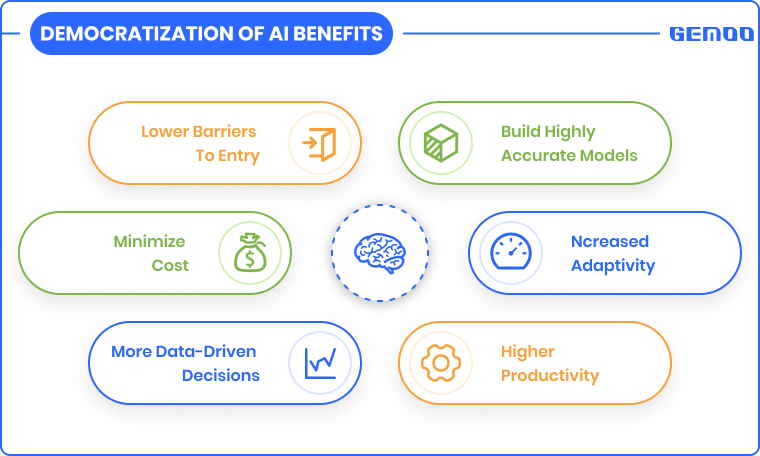
AI Trends – Democratization in AI
9. AI and Automation
According to PwC’s Global AI Study: Harnessing the AI Revolution, AI could contribute up to $15.7 trillion to the global economy by 2030. The convergence of AI and automation is another incredible trend to consider in 2023. Both technologies are predicted to drive the growth of an organization, and that’s because AI coupled with automation will complement human labor to increase productivity.
Another great benefit of AI and automation is decreased operational cost and time management. Since machines are built to perform similar operations as humans and even work faster, the demand for human labor in some fields will decrease exponentially in a few years.
Additionally, both technologies will surely improve risk management in a business.
AI and Automation Top Use Cases:
- Retail
- Manufacturing
- Real Estate
- Sales & Marketing
- Finance & Accounting
- HR
- Insurance
- Healthcare
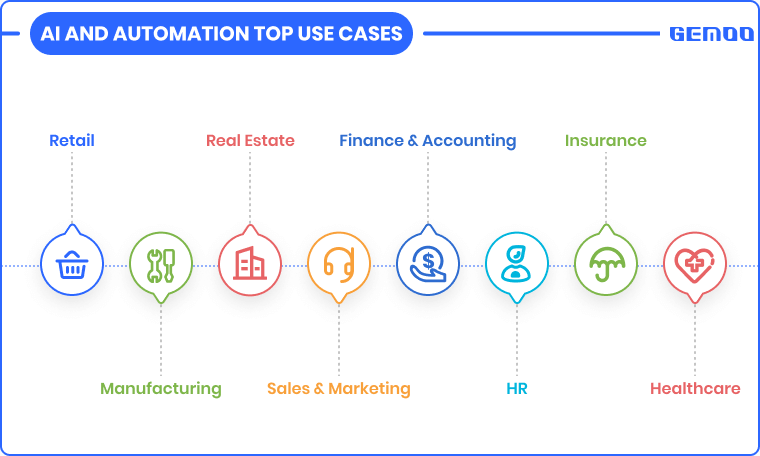
AI Trends – AI and Automation
10. No-code AI
No code AI is another trend worth paying attention to in 2023. With this tech, you don’t have to stress yourself writing codes from scratch. This AI system allows you to create sophisticated platforms or software programs with minimal effort quickly.
With No code AI, you don’t have to spend so much time writing or manipulating codes to generate desired results. Additionally, this trend helps reduce labor costs and improve time management, thereby increasing productivity. A typical example of a No code AI is the drags-and-drop feature tucked into most applications or programs. The feature allows you to move icons to and fro on a platform with complete ease.
10 Real-life Examples of No Code AI:
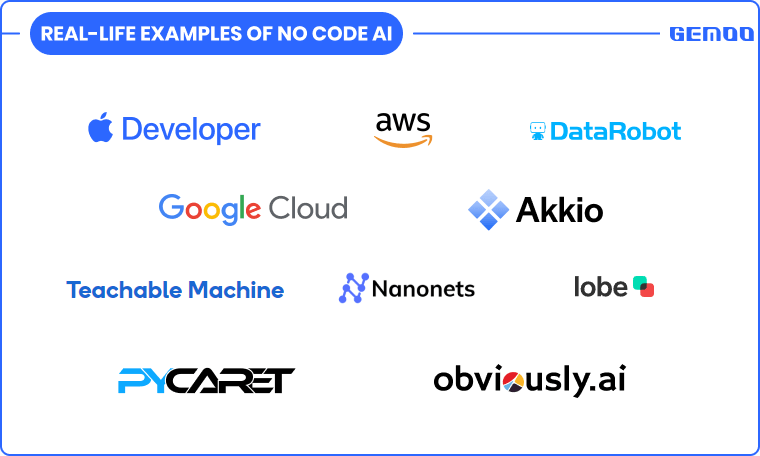
AI Trends – No-code AI
Final Words
Now you have our list of the top AI trends in 2023, which do you wish to implement in your business? Before making a decision, we want you to understand that all AI trends are of great benefit. Integrating two or more into your workspace will be highly beneficial to your business.
Sources:

